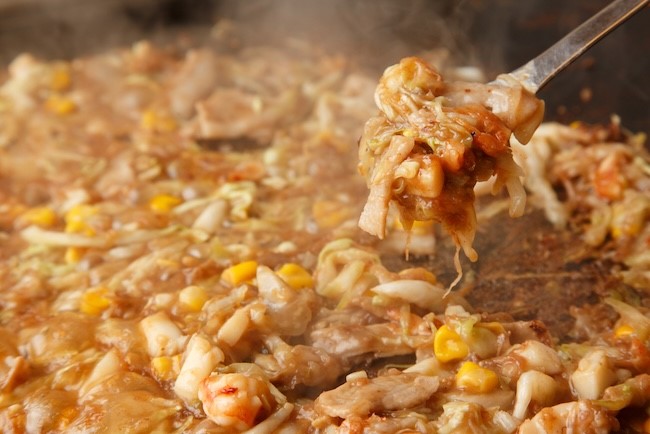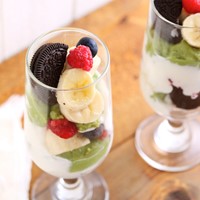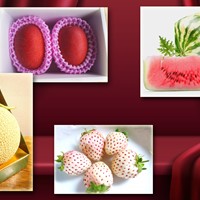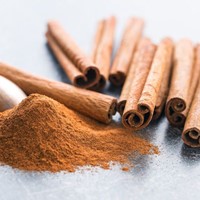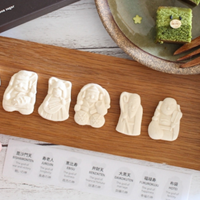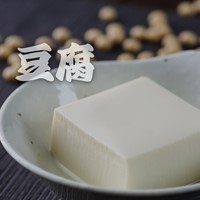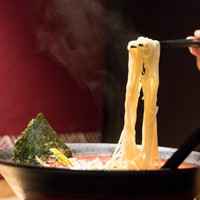Okonomiyaki vs. Monjayaki & Hiroshima-yaki: The Showdown
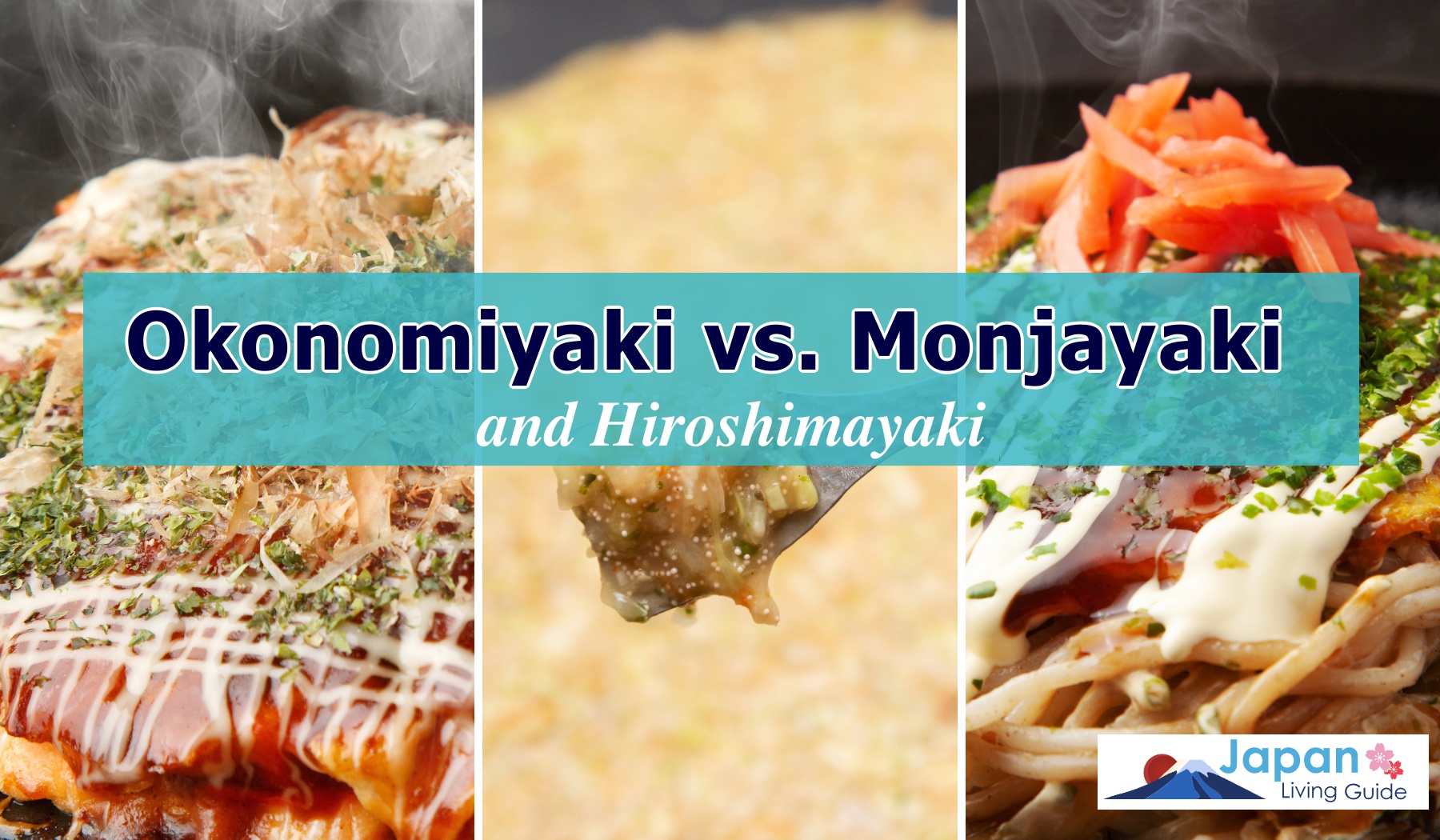
This page contains affiliate links.
When it comes to Japanese cuisine, few dishes embody the flavors and vibrant culture quite like okonomiyaki, monjayaki, and Hiroshimayaki. These savory pancakes have become iconic in Japan, each with unique characteristics and regional variations. Delicious, diversified, and more than a mouthful to pronounce, they are a fantastic journey of flavor, texture, and culinary tradition. What are okonomiyaki, monjayaki, and Hiroshima-yaki, you say? In this article, we'll delve into the world of these delicious treats and explore the intriguing differences between them.
Understanding Okonomiyaki, The "Japanese Pancake"
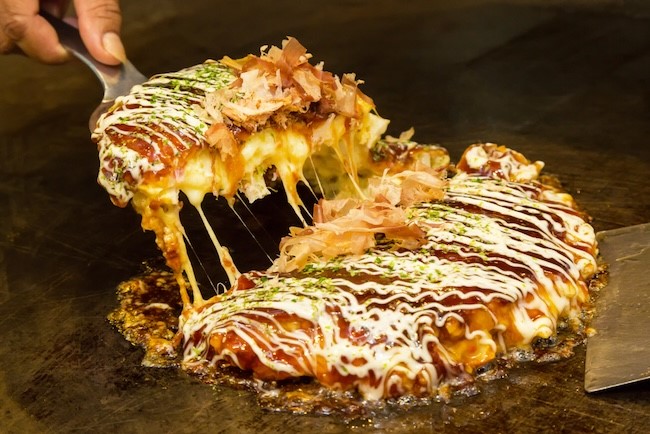
Hailing from Japan's kitchen, Osaka, okonomiyaki essentially means "grilled as you like." Okonomiyaki, often called "Japanese pizza" or "Japanese pancake," originated in Osaka during the late 19th or early 20th century. It was created as a way to make use of leftover ingredients, making it a versatile and economical dish—no need to adhere strictly to this recipe. Mix a good batter, pile on the cabbage, toss in your favorite ingredients—shrimp, pork belly, green onions, the sky's the limit—grill it on a teppan, and voila, you've got yourself a scrumptious okonomiyaki. Osaka style likes it all mixed, while Hiroshima prefers a bit of order with thoughtful layering. But remember, just like you, no two okonomiyakis are the same, and that's the true beauty of it!
Okonomiyaki Ingredients
While the three pancakes share some common ingredients, each has distinctive flavors. Cabbage, flour, eggs, and water serve as a base for okonomiyaki, giving it a delightful blend of textures. The cabbage adds a crispness, while the flour and eggs bind everything together. Additional ingredients such as meat, seafood, and vegetables can be added according to personal preference, making each okonomiyaki unique.
You can purchase Okonomiyaki kits and sauce on Amazon Japan.
Regional Variations
While okonomiyaki is enjoyed throughout Japan, it's interesting to note that there are regional variations that offer distinct flavor profiles. Each region has its own twist on this beloved dish, making it a culinary adventure to explore.
In Hiroshima, for instance, the noodles are layered beneath the pancake, creating a unique and delightful combination of textures. This variation, known as Hiroshima-style okonomiyaki, is a favorite among locals and tourists alike. The noodles add a chewy element to the dish, complementing the softness of the pancake and the richness of the toppings.
In Osaka, okonomiyaki tends to be thicker and includes a broader range of ingredients. This style, known as Osaka-style okonomiyaki, is often called "the kitchen sink" due to the abundance of toppings. From cabbage and green onions to bacon and seafood, the possibilities are endless. The result is a hearty and satisfying pancake that is bursting with flavors.
No matter where you try it, the combination of savory toppings, okonomi sauce, mayonnaise, and bonito flakes makes okonomiyaki a true culinary delight. It is a dish that brings people together, encouraging conversation and shared enjoyment. So, next time you have the opportunity, visit the world of okonomiyaki and savor every bite of this delectable Japanese creation.
Monjayaki, Tokyo's Melty Delight
Monjayaki, on the other hand, has its roots in Tokyo and is known for its runny texture, like a pan-fried batter. It first gained popularity in the early 20th century and was originally made with flour, water, and soy sauce. Over time, the recipe evolved to include various ingredients such as cabbage, seafood, and meat. The name "monjayaki" is derived from the word "monja," which means "to burn" or "to cook slowly." This cooking method involves pouring the batter onto a hot griddle and using small spatulas to mix and cook the ingredients. The result is a gooey, savory pancake that is both comforting and delicious.
It may appear like a hot, melty mess, but once you taste it, you'll understand why folks scrape off every bit from their mini spatulas. The secret is in the liquid ingredients, making it softer, and the vibrant, playful ingredients, such as mochi or even curry powder.
Monjayaki Ingredients
Monjayaki features a mix of flour and dashi stock, resulting in a gooey consistency that is both unique and addictive. Dashi stock, a flavorful broth made from dried kelp and bonito flakes, adds depth of flavor to the pancake. The batter is then combined with various ingredients such as cabbage, seafood, and cheese, creating a medley of flavors that meld together as it cooks on the griddle.
Hiroshimayaki, Hiroshima Style Okonomiyaki
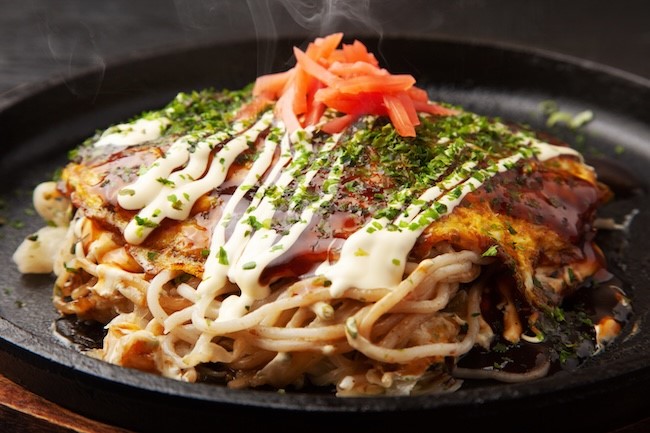
Last but not least, make way for Hiroshimayaki. It is said to have originated during the post-World War II era when resources were scarce, and people had to make do with what they had. Hiroshima's take on okonomiyaki insists on a method to the madness with perfectly orchestrated layers of batter, cabbage, pork, and toppings like fried eggs and green onions. What differentiates it, you ask? Yakisoba noodles. Nested between the other ingredients, they crown Hiroshimayaki as the undisputed king of innovation. The layers are carefully stacked and cooked on a griddle, creating a visually appealing and flavorful pancake. This pancake style is often enjoyed with various condiments, such as Worcestershire sauce and mayonnaise, adding an extra burst of flavor to each bite.
Hiroshimayaki Ingredients
Hiroshimayaki combines layers of egg, cabbage, and noodles, creating a harmonious blend of flavors. The noodles used in Hiroshimayaki are typically yakisoba noodles, which are stir-fried with vegetables and meat. The combination of the noodles, cabbage, and egg creates a satisfying and hearty pancake that is filling and delicious. Toppings such as fried eggs, green onions, and pickled ginger add a burst of color and flavor to the dish.
Okonomiyaki vs. Monjayaki vs. Hiroshimayaki: A Culinary Battle
Okonomiyaki, hailing from Osaka, features a thick batter loaded with cabbage and ingredients mixed together and cooked like a pancake. Monjayaki, from Tokyo, stands out with a thinner, runnier batter and a melt-in-your-mouth texture. Ingredients are first cooked separately, and then the batter is added. Hiroshima Yaki, native to Hiroshima, is similar to okonomiyaki but is distinguished by its well-defined layers of ingredients, including a generous serving of yakisoba noodles. Each dish represents its region's distinct approach to these savory "pancakes," showcasing unique textures and flavors.
The Social Aspect of Cooking and Eating Japanese Pancakes
Japanese cuisine has a unique way of bringing people together, and these pancakes are no exception. Whether it's the interactive cooking process of okonomiyaki, the communal experience of scraping up Monjayaki, or the layered complexity of Hiroshimayaki, these dishes foster connections and create lasting memories. Sharing a meal, chatting, and laughing while enjoying these delightful pancakes is a cherished pastime in Japan. It's a reminder that food isn't just sustenance; it's a means to connect and create joy.
Conclusion & Final Showdown
From the streets of Osaka to the corners of Tokyo to the avenues of Hiroshima, the voyage of Okonomiyaki, Monjayaki, and Hiroshimayaki is a testament to the versatility of Japan's culinary tapestry. They are not merely savory pancakes but edible stories of regions, people, and traditions, with each bite offering a fresh perspective and indulgent delight.



